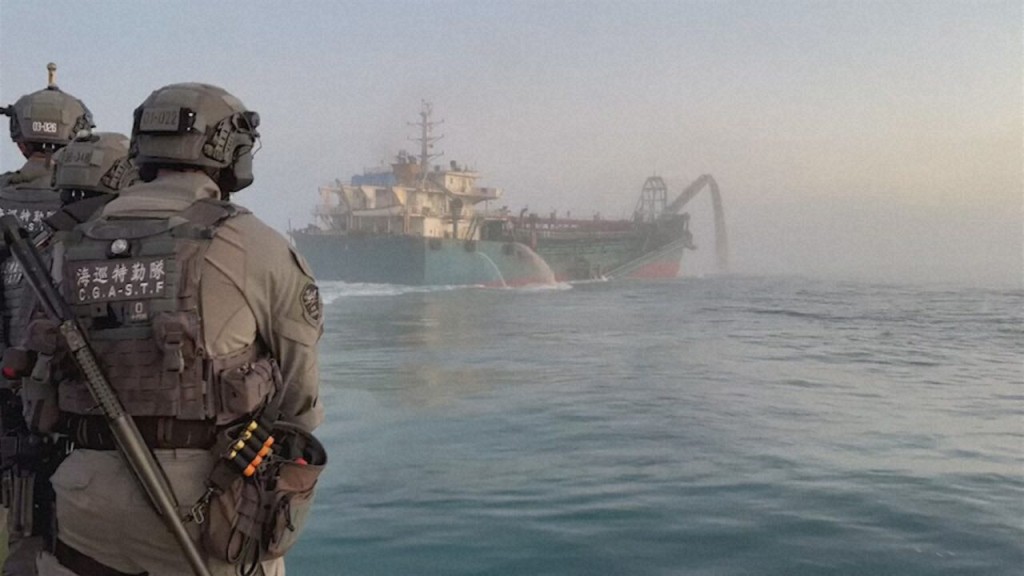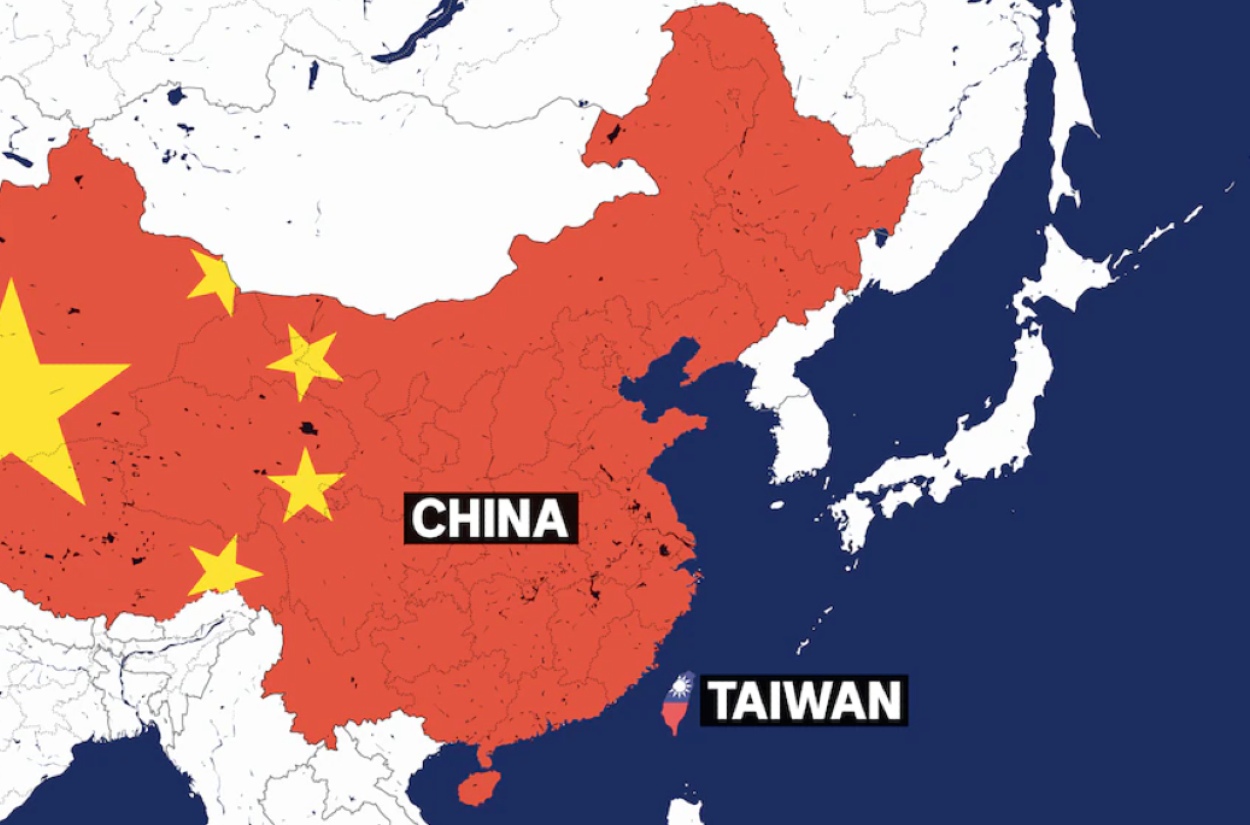A new law passed by Taiwan’s Parliament, the Legislative Yuan, will allow Taipei’s authorities to seize sand dredging vessels and equipment from mainland China permanently.
Australia’s E7 Wedgetail Makes The 1st Kill; Quite Likely Behind Downing Of Russian Su-34 Bombers: Analysis
This followed a 2021 case where a ship and sand excavation equipment impounded had to be released a year later, as the crew did not officially own it. Taiwanese law had until then required the criminal perpetrators to be the legitimate proprietors of the impounded material for it to be permanently confiscated.
As a part of its coercive tactics to deter what it claims is a renegade province, China often digs up sand from around the Matsu and Kinmen islands, prompting the Taiwan Coast Guard Authority (CGA) to drive them away. The vessels, however, return and continue their dredging, straining Taiwan’s military resources.
According to statistics from Taiwan’s Coast Guard Administration (CGA), from 2017 to 2021, Chinese sand mining vessels were driven away 5,328 times. This included two in 2017 and 73 in 2018, jumping to 605 and 3,991 in 2019 and 2020, respectively.
New Law – Owner Or Not, Boat Will Be Seized
The amendment to Article 36 of the Sand and Gravel Excavation states that “vessels or other machinery and equipment used for the crime mentioned shall be confiscated regardless of whether they belong to the perpetrator of the criminal act or not.”

The new law revolves around the seizure of Chinese sand dredging vessel Huayi No. 9 that the CGA captured on April 26, 2022, for illegally stealing sand 54 nautical miles (100 km) southwest of Penghu County’s Cimei Township. “The following year, the captain was sentenced to one year and ten months in prison, and the dredging ship was confiscated,” said a report in Taiwan News.
The boat’s captain, who had been arrested, filed an appeal that was also rejected, with the court upholding the original judgment. However, the confiscation of the dredging vessel was revoked for lack of evidence proving the dredging vessel’s owner’s complicity. “It did not meet the criteria that assets used in the crime must belong to the ‘perpetrator’ of the crime,” the report added.
Taiwan’s Islands In China’s Crosshairs
What complicates matters is that the Taiwan territory doesn’t only constitute the main island across the 150-kilometer Taiwan Strait but also the islands of Kinmen and Matsu, just off the southern and northern coasts of Fujian province of the People’s Republic of China (PRC).
Thus, the PRC’s claim also lies on these islands as Chinese territory, where it exercises jurisdiction and normalizes sea border violations. Territorial claims also constitute resource claims and extracting the existing resources (in this case, sand) is a way of asserting the claim.
Beijing conveys that it doesn’t consider Taiwan’s claim of being independent or representative of the Chinese nation. Therefore, from its standpoint, extracting sand from one’s territory is wholly legitimate and not illegal.
China Needs Sand For Construction
A July 2022 report in Foreign Policy noted how Chinese sand dredging activity has often been more prominent near the Matsu islands off northeastern Fujian Province. Chinese excavators, with crews, usually arrive in the waters of the Matsu islands, with 2020 seeing nearly 4,000 sand dredgers and sand transporting vessels. This was a 560 percent leap from 2019.
The sand is required for construction and infrastructure projects, which have been the defining symbol of China’s massive growth and heavy urbanization of its skyscraper-dotted cities. Taiwan’s Coast Guard Administration (CGA) cannot do much except “chase” the vessels “away, by which time they’ve already managed to get at least a bit of sand from the sea bed.”
Sand is also used in concrete, glass, and asphalt – and increasingly for land reclamation, a critical part of infrastructure expansion in Hong Kong and other cities. Desert sand is unsuitable for construction since it is too smooth and not cohesive, unlike sand from rivers, coastlines, and quarries.
China’s Gray Zone Strategy
Again, this is a part of a larger gray zone strategy. Here, conducting such activities in Taiwan’s jurisdiction forces Taiwan to divert and exhaust military resources for an activity of a non-military nature that is “not massive enough to warrant a military response by the targeted country but still very harmful.”

But the leading arm of China’s gray zone tactics is its fishing vessels, also called the “maritime militia,” that establishes “a de facto Chinese operating presence in disputed areas – in effect, changing the facts on the ground, or at sea – to challenge the opposing party’s territorial claims. These classic “gray zone” operations are designed to “win without fighting” by overwhelming the adversary with swarms of fishing vessels, usually bolstered from the rear with CCG and possibly PLAN warships.
The underlying philosophy behind gray zone warfare is to raise the fear of escalation among target countries, given nations’ aversion to full-scale conventional wars, and either successfully assert territorial claims or gain strategic leverage. The Center for Strategic and International Studies (CSIS) describes ‘gray zone’ tactics as an “effort or series of efforts beyond steady-state deterrence and assurance that attempts to achieve one’s security objectives without resorting to direct and sizable use of force.”
- The author can be reached at satamp@gmail.com
- Follow EurAsian Times on Google News




